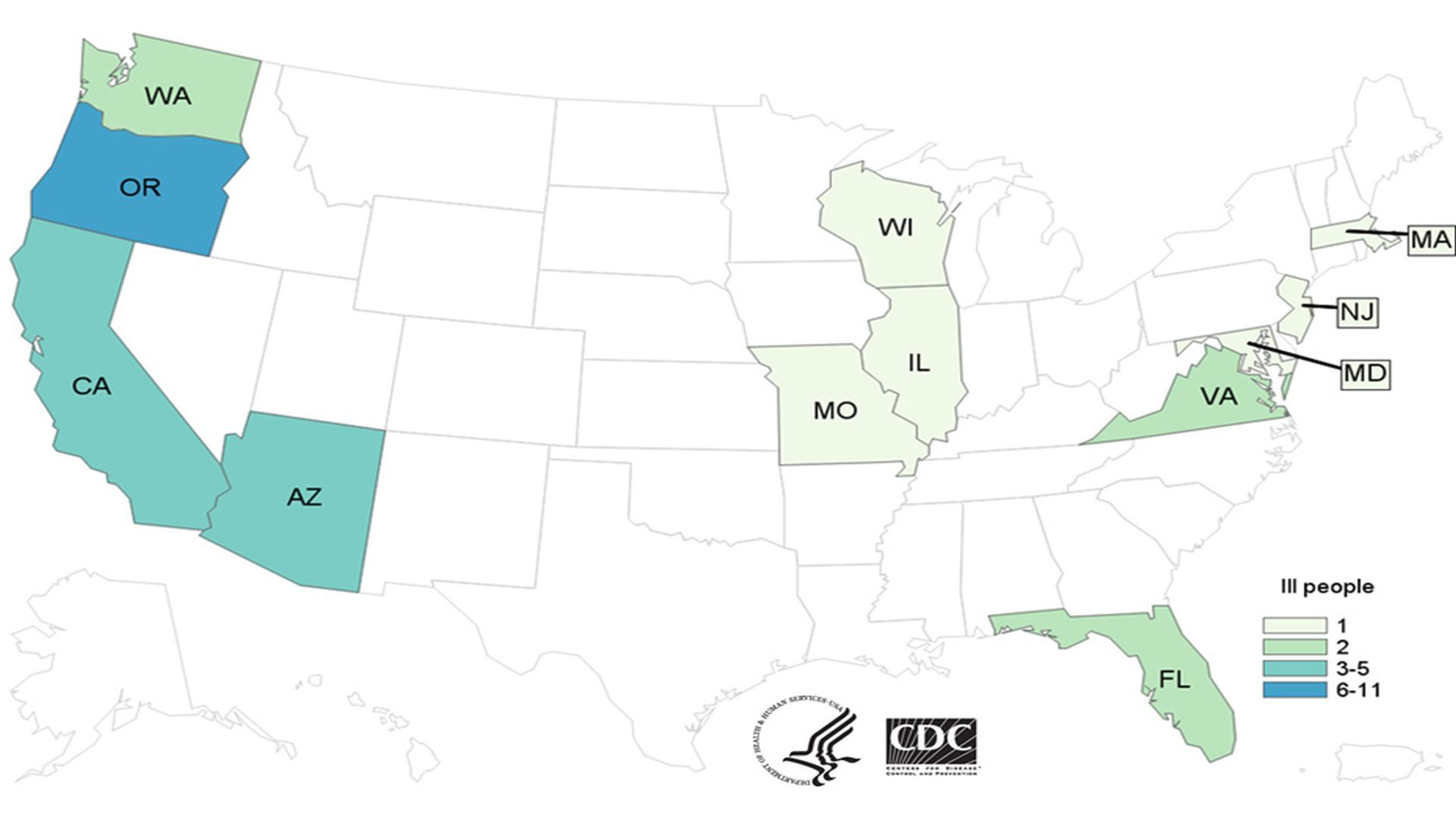CDC Investigating Multistate Outbreak of E. coli O157:H7 Infections


The Centers for Disease Control and Prevention (CDC), several states, and the U.S. Food and Drug Administration are investigating a multistate outbreak of Shiga toxin-producing E. coli O157:H7 infections (STEC O157:H7) in 13 states. Seventeen illnesses have been reported from California (3), Connecticut (2), Illinois (1), Indiana (1), Michigan (1), Nebraska (1), New Hampshire (2), New York (1), Ohio (1), Pennsylvania (1), Virginia (1), Vermont (1) and Washington (1). Illnesses started on dates from Nov. 15 through Dec. 8, 2017. The Public Health Agency of Canada also is investigating an outbreak of STEC O157:H7 infections in several provinces.
The CDC is performing whole genome sequencing on samples of bacteria making people sick in the United States to give us information about whether these illnesses are related to the illnesses in Canada. Preliminary results show that the type of E. coli making people sick in both countries is closely related genetically, meaning the ill people are more likely to share a common source of infection.
The Public Health Agency of Canada has identified romaine lettuce as the source of the outbreak in Canada. In the United States, state and local public health officials are interviewing sick people to determine what they ate in the week before their illness started. The CDC is still collecting information to determine whether there is a food item in common among sick people, including leafy greens and romaine.
Because it has not identified a source of the infections, the CDC is unable to recommend whether U.S. residents should avoid a particular food at this time.
Source: CDC
Show, Tell, Teach: Elevating EVS Training Through Cognitive Science and Performance Coaching
April 25th 2025Training EVS workers for hygiene excellence demands more than manuals—it requires active engagement, motor skills coaching, and teach-back techniques to reduce HAIs and improve patient outcomes.
The Rise of Disposable Products in Health Care Cleaning and Linens
April 25th 2025Health care-associated infections are driving a shift toward disposable microfiber cloths, mop pads, and curtains—offering infection prevention, regulatory compliance, and operational efficiency in one-time-use solutions.
Phage Therapy’s Future: Tackling Antimicrobial Resistance With Precision Viruses
April 24th 2025Bacteriophage therapy presents a promising alternative to antibiotics, especially as antimicrobial resistance continues to increase. Dr. Ran Nir-Paz discusses its potential, challenges, and future applications in this technology.